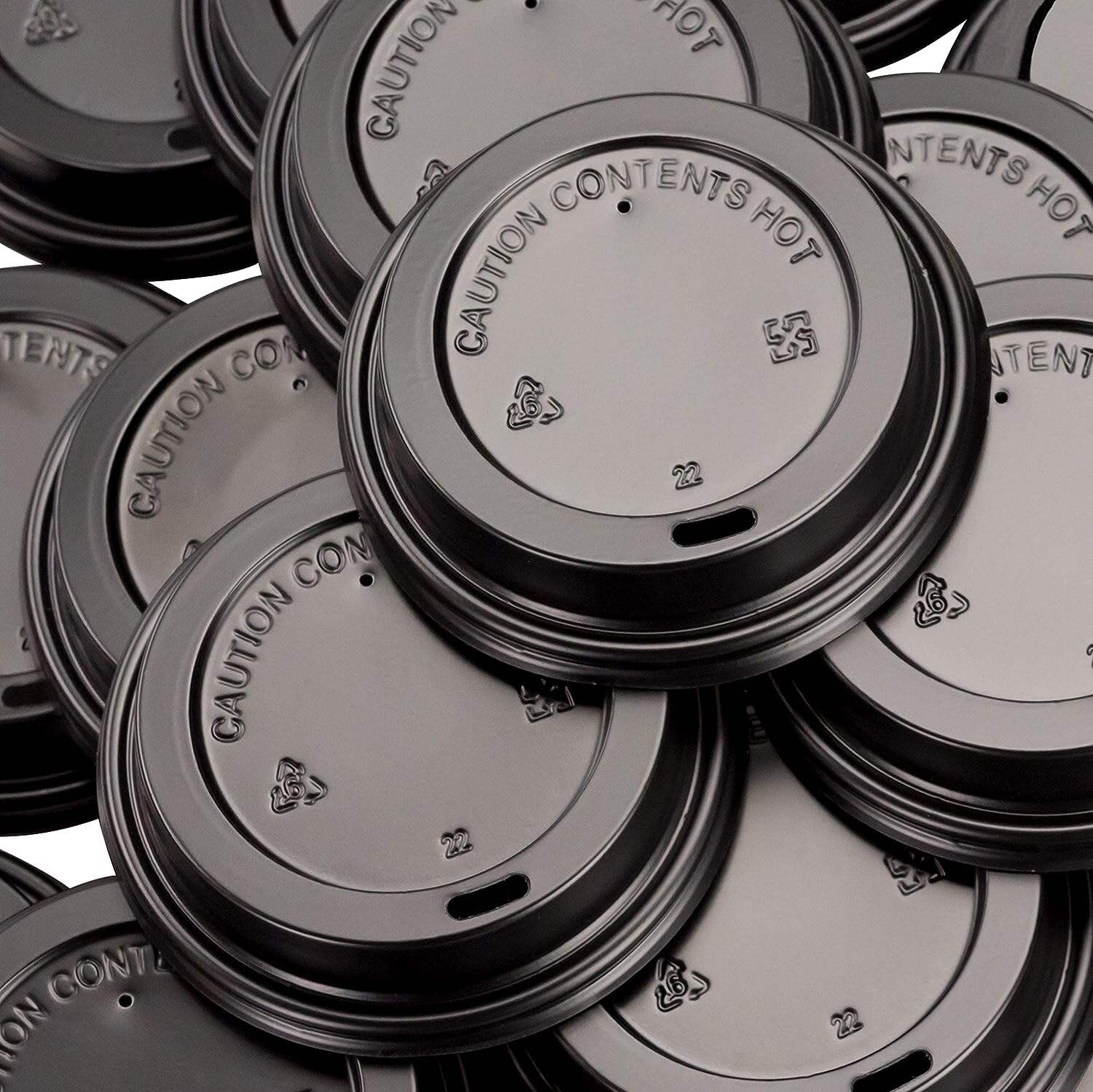Understanding Cup and Lid Size Compatibility
Matching Lid Diameter to Cup Size for a Secure, Leak-Proof Fit
Getting a good spill resistant seal starts with how well the lid fits onto the cup. When lids are too big for the cup rim by even just over 1.5mm, they actually make leaks happen about 30% more often. And if the lid is too small, it doesn't really grab those little ridges around the cup that help create a proper seal. A recent report from the Food Service Packaging Institute back in 2023 found something pretty shocking too. They discovered that nearly 78 out of every 100 hot drink spills happen because the lid simply wasn't aligned properly with the cup. This shows why manufacturers need to be super careful about getting those measurements right down to the millimeter when making these products.
Common Cup Sizes (12–24 oz) and Their Standard Lid Dimensions
Most foodservice operations rely on standardized cup-lid pairings:
| Cup Capacity | Ideal Lid Diameter | Common Use Cases |
|---|---|---|
| 12 oz | 85–87 mm | Espresso, cortado |
| 16 oz | 90–92 mm | Latte, iced tea |
| 20 oz | 95–97 mm | Smoothies, bubble tea |
| 24 oz | 100–102 mm | Soft drinks, milkshakes |
Industry standards for disposable packaging recommend reviewing compatibility charts during seasonal menu updates, as specialty beverages may require non-standard dimensions.
How Cup Height, Top Diameter, and Capacity Affect Lid Selection
Three key dimensions influence lid performance:
- Height-to-width ratio: Taller cups (height >2– diameter) need deeper lid skirts for secure grip
- Rim thickness: Cups with 1.2–1.8 mm walls work best with snap-fit lids
- Volume displacement: Carbonated drinks require 5–7% headspace in cup-lid systems to prevent foam overflow
Data Insight: 78% of Spills Caused by Improper Lid to Cup Alignment
A 2024 National Restaurant Association analysis of 12,000 beverage incidents found mismatched cup-lid systems cause four times more liquid loss than barista errors. The average 20 oz drink spill costs $1.74 in wasted product and cleanup–significant for high-volume operators serving 500+ drinks daily.
Universal and Multi-Size Cup Lids: Pros, Cons, and Performance
How Universal Lids Work Across 12–24 oz Cup Ranges
Universal lids use flexible sealing rings and graduated flange designs to fit various rim diameters. Key features include:
- Adjustable friction zones (5–7 mm tolerance) accommodating rims from 72 mm (12 oz) to 85 mm (24 oz)
- Tapered sidewalls that compress without buckling
- Pressure-activated seals engaging at 2–4 PSI for leak resistance
These lids typically work across hot and cold applications, though thermal expansion demands careful material selection to avoid warping.
Benefits of Versatility vs. Risks of Compromised Seal and Leakage
While universal lids reduce inventory costs by 18–22% (Food Service Packaging Institute 2024), they carry higher spill risks due to stretched sealing surfaces:
| Factor | Standard Lid | Universal Lid |
|---|---|---|
| Leakage Rate | 2% | 5–8% |
| Compatibility | 1 cup size | 3–4 cup sizes |
| Inventory Efficiency | Low | High |
Operations focused on speed often choose universal lids, whereas specialty beverage providers prefer custom-fit solutions for maximum security.
Industry Challenge: Balancing Convenience With Spill Prevention
Manufacturers are addressing the versatility-security trade-off through innovations such as:
- Dual-density materials (firm outer ring + soft inner gasket)
- Click-lock mechanisms providing audible confirmation of proper seal
- Ribbed underside patterns that redirect liquid away from edges
Recent lab tests show third-generation universal lids reduce leakage by 33% compared to 2022 models, thanks to tapered vent channels that balance internal pressure. Still, 12% of operators report occasional seal failures during fast-paced service.
Lid Design by Beverage Type: Matching Function to Use
Dome vs. flat lids: differences for hot coffee, tea, and cold drinks
Dome lids provide 0.6–0.8 inches of vertical space, making them ideal for frothy beverages like cappuccinos or milkshakes. Flat lids minimize air exposure by 23% compared to domed versions (Packaging Digest 2023), enhancing cooling for iced coffee and teas. For hot drinks, ensure lids can withstand temperatures up to 212°F without deforming.
Sip through lids for hot beverages: safety, ergonomics, and heat retention
Sip openings of 5–7 mm optimize flow rate and spill resistance. Beveled edges improve heat retention by 18% over flat openings, according to a 2024 thermal study. Always verify steam vent integration–poorly vented lids raise scalding risks by 4.2– in rushed environments.
Spill resistant features in smoothie and cold drink lids
Thicker straw slots (1.2–1.5 mm wall thickness) resist splitting under high-viscosity liquids. Rotation-lock mechanisms reduced cleanup costs by $7,300/year per location in a 12-chain trial. For carbonated beverages:
- Pressure-resistant seals (minimum 3.1 PSI capacity)
- Recessed sip ports to contain foam overflow
Case Study: National café chain reduces leaks by 40% with targeted lid changes
A 280-location operator shifted from size-based to category-based lid standardization, using:
| Metric | Before | After 12 Months |
|---|---|---|
| Spill incidents | 73/day | 44/day |
| Lid inventory | 9 types | 4 types |
| The strategy prioritized domed polypropylene (PP) lids for lattes and flat PET lids for iced teas, demonstrating that functional lid selection improves both efficiency and consistency. |
Material and Durability Factors in Cup Lid Selection
Plastic, Biodegradable, and Compostable Lid Materials Compared
The materials used for modern lids need to work well but also be kind to the planet. Most companies still rely heavily on polypropylene or PP because it lasts longer and doesn't break the bank when produced at scale. But there's been some real movement towards greener options lately. Take polylactic acid (PLA) for instance, which comes from corn starch and is starting to gain traction across restaurants and cafes nationwide. According to recent data from the United States Cup Lid Market Report published last year, around 28 percent of all foodservice lids sold today are made with this biodegradable material. The catch though? These eco friendly lids actually need special facilities to decompose properly, something that only about 37 out of every 100 American towns have access to right now.
Heat Resistance and Structural Integrity Under Temperature Changes
Material behavior varies significantly under heat. PP lids tolerate temperatures up to 212°F (100°C), making them suitable for hot beverages. In contrast, PLA lids begin to warp above 140°F (60°C). A 2023 NSF International study revealed that 91% of coffee shops prioritize heat-resistant materials to prevent deformation during steaming or reheating.
Long Term Durability and Environmental Impact of Common Cup Lid Materials
The balance between lasting long versus being good for the environment isn't easy to strike. Regular plastics made from oil can stick around for hundreds of years and handle all sorts of wear and tear without breaking down. Compostable alternatives tell a different story though they start to break apart in just 6 to 12 months, sometimes even cracking when put under pressure. Still, most people seem okay with this trade off. Recent surveys show that about 6 out of 10 customers actually want those green lids on their takeout containers. This preference probably comes from companies talking up their environmental efforts plus those laws banning single use plastics now active in eighteen states across America.
Optimizing Lid Selection for Business Efficiency
Best Practices for Managing Multiple Cup and Lid Sizes in High Volume Operations
When it comes to managing lid stock for cups in the same size category, having fewer different SKUs actually makes life easier without sacrificing what works. Take those 12 to 24 ounce cups for example – most places find they only need around two or three different lid sizes to cover everything properly. Some companies started using barcode systems to track when the wrong lids get used, and guess what? Those who cut their lid varieties down by about 30 percent reported cutting inventory mistakes nearly in half according to recent packaging research from last year. Another smart move is setting up specific storage areas for lids alongside clear signs right where drinks are made, so staff don't accidentally grab the wrong ones. This simple approach saves time and money while keeping customers happy with consistent service.
Downloadable Cup Lid Compatibility Guide for Quick Reference
Staff can now check if cups match their lids by scanning QR codes thanks to digital compatibility charts printed right on packaging materials. Most major suppliers have these handy reference sheets that show what temperatures different materials can handle, along with details about thicknesses and sizes for more than a hundred common cup and lid combinations. Restaurant managers often print these out and laminate them at drink stations where they're easy to see. Some forward thinking businesses even hook these references directly into their point of sale systems so employees get instant confirmation when taking orders, making sure customers always get the right fit every time they place an order.
Trend: Smart Inventory Systems With QR Coded Lid Cup Matching Charts
Systems such as StorMax Pro create QR codes that match each cup size to the right lids. When staff scan these codes, they get information about which lids work best, current inventory counts, plus warnings when stocks start running low. According to FoodService Tech from last year, restaurants using this tech saw their restocking time drop by about 27 percent while wasting around 15% fewer lids overall. These results show just how much difference proper lid matching can make for restaurant operations and environmental impact at the same time.
FAQ
Why is it important to match lid diameter to cup size?
Correctly matching lid diameter to cup size ensures a secure, leak-proof fit, reducing the likelihood of spills by maintaining proper alignment and sealing.
What are the common cup sizes and their corresponding lid dimensions?
Common cup sizes range from 12 oz to 24 oz, with lid diameters varying between 85 mm and 102 mm, suited for different beverages like espresso, lattes, smoothies, and more.
What are the benefits of using universal lids?
Universal lids can fit multiple cup sizes, reducing inventory costs by accommodating a wider range of rims. However, they may increase spill risks due to stretched sealing surfaces.
How do material choices affect cup lid performance?
Material choice affects heat resistance and durability. For instance, PP lids are suitable for high temperatures, whereas PLA lids are biodegradable but may warp above certain temperatures.
How can businesses optimize cup and lid management?
Businesses can optimize management by reducing the variety of lid SKUs, implementing smart inventory systems, using compatibility guides, and providing clear storage practices to prevent mismatches.



